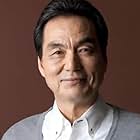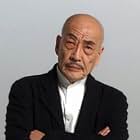In The Dazzling Life of Hokusai's Daughter, we step into the captivating world of Katsushika Oi, a ukiyo-e artist and the third daughter of the renowned Katsushika Hokusai. There's no need to introduce Hokusai - his works are emblematic of Japanese art and culture. While Oi may not have achieved the same level of fame as her father, anyone who delves into her art will undoubtedly recognize her undeniable talent.
From a young age, Oi followed in her father's footsteps, exhibiting a deep fascination for the world of painting. As she matured, she divorced her husband only a few years after marriage and returned home to care for and assist her father. Oi played a vital role in supporting Hokusai in completing his series Thirty-Six Views of Mount Fuji.
As Hokusai grew older and could no longer wield his brush with the same freedom, Oi took on the role of his "hand", meticulously crafting artworks on his behalf. It was during this time that her own passionate affair with colors began to flourish, eventually leading her to develop her unique style. Hokusai once humbly remarked, "The beauties I draw cannot compare to those drawn by Oi." Indeed, Oi excelled in the art of drawing both beautiful women and calligraphy.
Oi inherited not only her father's artistic talent but also his free-spirited nature. Both cared little for material possessions, and household chores were a mere afterthought. They would lose themselves in painting, often forgetting to prepare meals and instead buying ready-made food from a nearby market. After a time, when their living conditions had become utterly chaotic and unmanageable, they would pack up and move to a new location.
In the modern era, their unconventional lifestyle might be considered merely artistic eccentricity. However, in the 19th century, in a society deeply rooted in gender biases, particularly in Japan, these actions might have elicited more than a few raised eyebrows. But Oi remained unconcerned; her world was the world of art. Even when love left her disappointed, and even when others, including her own mother, failed to comprehend her, in her eyes, the radiant sun continued to light her path, guiding her through life's hurdles.
Yet, with Hokusai's passing, Oi's life took an unexpected turn. The details of this change remain shrouded in mystery. It is known that she lived the remainder of her life in solitude and passed away just a few years later. It can be surmised that for a middle-aged woman who knew only the art of brush and ink, and found herself without a support system in a rigid feudal society, life must have been far from easy.
While the film mentions her lonely death, the true events that followed Hokusai's passing remain elusive. Nonetheless, even if she humbly lingered in her father's shadow, Katsushika Oi undoubtedly left a unique and indelible mark on the world of Japanese art. Her talent and her lifestyle that transcended the conventions of her time, forever safeguard her name from fading into obscurity.







